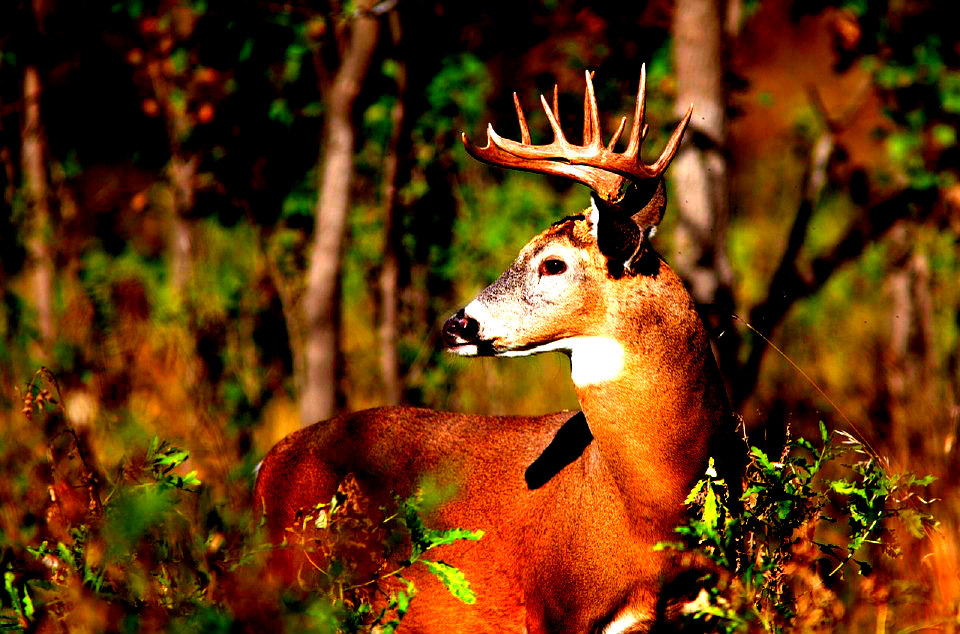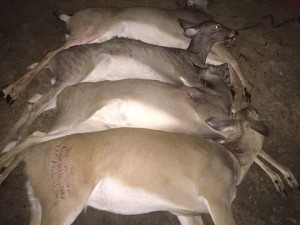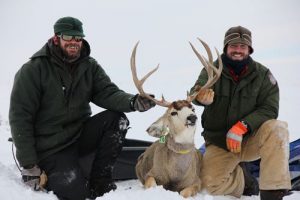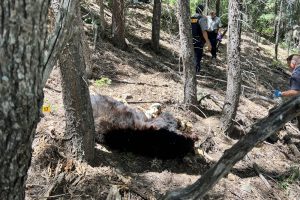Meetings earlier this month brought a number of changes to the practice many municipalities and other political subdivisions use to control deer populations in the state of Pennsylvania. The practice of culling, or removing a large amount of animals in a short time period utilizing state-sanctioned sharpshooters, has been an effective tool for many municipalities hoping to manage their whitetail numbers.
Although these practices are effective in nature, they do face a great deal of opposition, despite the humane and ethical guidelines these activities follow. The sharpshooters used for these culls are highly-trained and effective and the meat from the animals is donated to local shelters and those in need, eliminating the risk of injured or wasted animals.
Pennsylvania’s Game Commissioners approved a series of amendments earlier this month affecting the application process for certain deer-control permits. Under the new regulations, applicants are required to explicitly define how licensed hunting has been used to address the problem in the past and how the applicant would continue to utilize licensed hunting if the permit were approved.
The commission has continually stated it is committed to hunters, aiming to “bring hunters back into the process, which is always No. 1 in our minds,” commission president Brian Hoover of Delaware County said.
The new regulations will reach beyond traditional culls and special permits, as the commission plans to utilize licensed hunters in the battle against controlling disease in the deer population. The state is currently discussing plans to hire USDA sharpshooters to kill upwards of 300 deer over bait piles this winter inside of CWD disease management area 2 in southwestern and south-central Pennsylvania and is considering including licensed hunters.
“Just like we want to have hunters be the ones where (municipalities) are doing culling, it’s like, we wouldn’t we allow hunters to come into that baited area and do the removal?” Commissioner Jim Daley asked.
The answer to that question, unfortunately, is not as cut-and-dry as many would hope. The challenge in containing and removing diseased animals is precision, which state sharpshooters bring. While Commissioner Daley has the right intentions in mind, many believe opening up these types of hunts could become disastrous if not handled efficiently, as many recreational hunters lack the amount of training and tools used by those sanctioned by the state to remove deer.
Currently in Pennsylvania, hunters are able to utilize DMA 2 permits, which are doe licenses that permit hunters to take antlerless deer within the boundaries of the disease management area 2, introduced to utilize licensed hunters in the fight against CWD. Boundaries, however, were proven to have been too broad in definition, allowing hunters to take additional deer in areas that have never experienced chronic wasting disease.
“While I’m not against keeping populations down in those (other) areas, the concentration needs to be more specific,” Commissioner Tim Layton of Windber said.
With that in mind, there are rumors circling that another permit may be introduced, specifically targeting antlerless deer in the 11 townships currently holding affected animals, once again, strategically positioning recreational hunters with USDA sharpshooters in an attempt to control both disease and numbers of deer.




